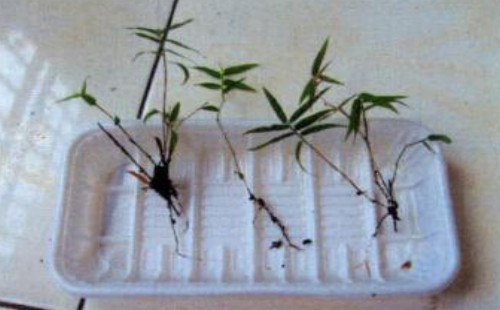How to propagate Phyllostachys pubescens-Propagation method of Phyllostachys pubescens
Potted Phyllostachys pubescens has high ornamental value, but how to reproduce it? Like many potted green plants, Phyllostachys pubescens can be bred by sowing, cutting, ramet and other ways. However, Phyllostachys pubescens is generally propagated by vertical cuttage, but it is not suitable to be buried horizontally. If sowing, the operation is often tedious, and time-consuming; ramet, although it looks relatively simple, but a little careless in the operation, may damage a lot of roots, thus reducing the survival rate.

However, since Phyllostachys pubescens can propagate and breed new plants in three common ways, the editor also gives you a brief introduction here. Of course, the editor does not want you to learn every way of reproduction, but at least you can choose a suitable breeding method to cultivate new plants. If you can master the following three ways of breeding well, it will be even better. After all, how many skills do not weigh on you!
I. sowing method
The sowing of Phyllostachys pubescens is mainly in spring. But to sow, first of all, we need to prepare strong seeds, but also prepare in advance the cultivation soil for sowing. If the seeds of Phyllostachys pubescens are used for sowing and propagation, it is usually necessary to prepare acidic soil, and the PH value should be adjusted to between 4.5 and 7. Before planting, it is recommended to expose the cultivated soil or apply some carbendazim drugs to disinfect and sterilize.
Before sowing, the seeds also need to be soaked in warm water to promote germination, so as to achieve the purpose of rapid growth. After the completion of sowing, the thickness of the covered soil should be appropriate, and at the same time, attention should be paid to keeping the cultivated soil with appropriate humidity, so it is necessary to do a good job of replenishing water in time. If it goes well, the seeds of Phyllostachys pubescens can be seen to grow seedlings in more than a month.
2. Cutting method
The best cutting time of Phyllostachys pubescens is from May to June in summer, and the original cutting substrate requires good water permeability and certain water retention capacity. At the same time, the stems of 2-3-year-old Phyllostachys pubescens should be cut as cuttings and then inserted into a cutter with a depth of about 2.5 cm. Avoid inserting cuttings too deep or too shallow, otherwise it is not conducive to the survival of cutting seedlings.
After cutting, in addition to maintaining the appropriate humidity of the cutting bed, we also need to control the air humidity, which usually needs to be kept at about 85%, so we need to spray more water into the air to improve the air humidity. Usually protect the 6-7 spray operation every day, but also need to do a good job of shading to avoid direct sunlight to reduce water evaporation. If it goes well, it usually takes a month to take root and sprout.
Third, split-plant method
The ramets of Phyllostachys pubescens are also mostly carried out in the spring and autumn season, mainly dividing the overly dense clumps into several plants, and then potting them separately. First of all, it is necessary to select a luxuriant growth clump of Phyllostachys pubescens, then take off the pot, and then use a sharp blade to divide it reasonably along the rhizome of the plant, and then transplant it in the pot.
During this period, it should be noted that when cutting the root with a sharp blade, we should be careful to break or damage the root system of the plant as much as possible, because the root system will often affect the survival in the case of a large number of damage or deep damage. Therefore, the operation needs to be careful, usually the root system of the plant is straightened out and then divided. After the clump is scientifically divided into several parts, it can be planted in different flowerpots.
Time: 2019-06-07 Click:
- Prev

Cutting method of mosaic stone
Huaye Luoshi is a typical foliage plant, which has the best ornamental effect when it is shown in a mixture of red, pink, pure white, stripes, green and other leaf colors. Therefore, we need to do a good job in every link in the process of planting and growing flowers and leaves, especially in maintenance and management.
- Next

Sowing and Propagation methods of Phyllostachys pubescens
In the previous article, the editor mentioned that Phyllostachys pubescens can be bred by sowing. However, the process of breeding seedlings by seed sowing is tedious, and it needs to be treated in advance, and the climate and environment also need to be suitable.
Related
- Fuxing push coffee new agricultural production and marketing class: lack of small-scale processing plants
- Jujube rice field leisure farm deep ploughing Yilan for five years to create a space for organic food and play
- Nongyu Farm-A trial of organic papaya for brave women with advanced technology
- Four points for attention in the prevention and control of diseases and insect pests of edible fungi
- How to add nutrient solution to Edible Fungi
- Is there any good way to control edible fungus mites?
- Open Inoculation Technology of Edible Fungi
- Is there any clever way to use fertilizer for edible fungus in winter?
- What agents are used to kill the pathogens of edible fungi in the mushroom shed?
- Rapid drying of Edible Fungi

